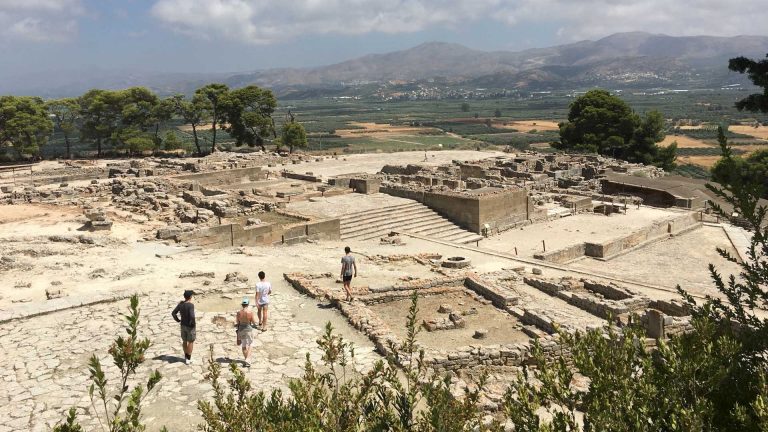We ventured to the Palace of Phaistos, nestled on the east end of Kastri Hill, where we were greeted by one of Crete’s most significant Minoan palaces. Surrounded by the expanse of the Messara plain, the ruins of both the ancient and new palaces offered us a glimpse into a bygone era of splendor and architectural prowess.
A Journey Through Time
Our exploration began with the Old Palace, constructed around 2000 B.C., which had witnessed multiple restorations due to earthquakes. The layers of history became apparent as we learned about the three distinct periods identified by archaeologists, marking the evolution of Crete’s earliest palace structures. The New Palace, rising from the earthquake ruins, showcased a different era, albeit with fewer remains accessible to the public. The mysterious scarcity of expected artifacts intrigued us, suggesting Phaistos’ waning significance in the shadow of neighboring Agia Triada.
Architectural Marvels and Religious Rites
The Upper West Court, acting as a bridge between the old and new, led us to the Theatrical Area. Here, we could almost hear the echoes of ancient rituals and performances that once captivated spectators. The grandeur of the West Propylon, the storage facilities, and the religious quarters highlighted the complex’s multifaceted purpose, blending administration, worship, and daily life seamlessly.
Royal Residences and Craftsmen’s Workshops
As we delved deeper into the palace, the northeast wing hinted at the presence of skilled craftsmen, with remnants of a metal-smelting furnace painting a vivid picture of creativity and industry. The royal apartments, adorned with alabaster stones, spoke of a sophisticated understanding of space and light, offering us a momentary connection to the lives of those who once roamed these halls.
A Serene Exploration
Unlike the bustling tourist sites we had encountered before, Phaistos provided a tranquil setting for our exploration. The absence of crowds allowed us to immerse ourselves in the beauty and tranquility of Crete’s landscape, making our visit to the Palace of Phaistos not just a historical journey but a personal encounter with the island’s rich heritage. As we departed, we carried with us memories of Phaistos’ timeless grandeur, forever etched in the stones that have withstood the test of time.
Sorry, no records were found. Please adjust your search criteria and try again.
Sorry, unable to load the Maps API.
